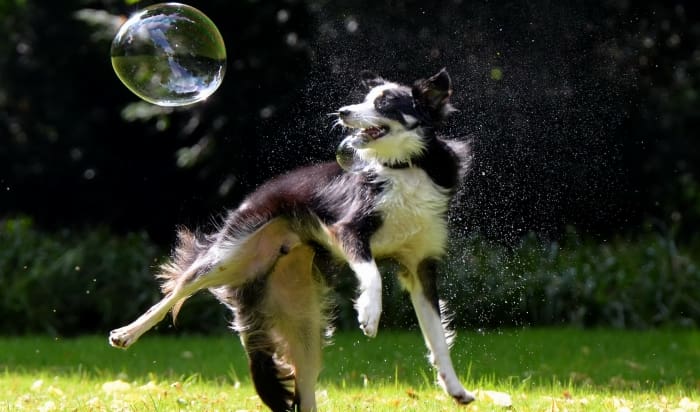Dog training is an essential aspect of responsible pet ownership. It helps to establish a healthy relationship between the dog and the owner and ensures that the dog is well-behaved and safe in various situations.
Over the years, several training methods and techniques have been developed, each with its own set of advantages and disadvantages. One concept that has gained popularity in various fields, including economics and finance, is the bubble theory. In this post, we will explore how bubble theory can be applied to dog training and how it can change the way we approach dog training.
Bubble theory refers to the idea that certain assets, such as stocks or real estate, can become overvalued due to market speculation and hype, leading to a sudden drop in value when the bubble inevitably bursts. Similarly, in dog training, certain techniques or methods can become overvalued and overly hyped, leading to a “training bubble” that may eventually burst, causing more harm than good.
One example of a training bubble is the concept of dominance theory. In the past, it was widely believed that dogs were packed animals and that the alpha dog or pack leader had to assert their dominance over the rest of the pack. This theory led to the use of punishment-based training techniques such as alpha rolls and physical corrections. However, studies have shown that dogs do not actually form strict linear hierarchies like wolves do, and the idea of dominance theory has since been debunked.
Another example of a training bubble is the concept of “positive-only” or “force-free” training. While positive reinforcement is a highly effective training technique, relying solely on it and rejecting any other form of correction or punishment can be counterproductive. This approach can lead to dogs becoming overly reliant on treats and lacking the necessary impulse control and self-discipline to behave appropriately in various situations.
Understanding the bubble theory can revolutionize the way we approach dog training. Instead of blindly following a single training method or technique, we should be willing to adapt to the unique needs of each dog and recognize when certain training methods or techniques have become overvalued and may no longer be effective. By staying informed and being flexible, we can provide our furry friends with the best possible training experience.
To understand the bubble theory in dog training, we need to understand the basics of how it works. A bubble is created when there is a significant increase in demand for a particular asset or product. In dog training, this could be a particular method or technique that gains popularity due to successful outcomes or social media hype. This sudden increase in demand can cause trainers to overvalue the technique, leading to a training bubble.
The problem with a training bubble is that it often leads to trainers blindly following a technique without considering the unique needs of each dog. For example, if a particular training technique relies heavily on treats, some dogs may become too reliant on the treats and may refuse to perform the desired behavior without a treat. On the other hand, if a technique relies on physical corrections, it can lead to fear and anxiety in some dogs, causing long-term harm to their mental and emotional well-being.
To avoid falling into a training bubble, it’s essential to stay informed and up-to-date with the latest research and training methods. The dog training industry is constantly evolving, and new techniques and methods are being developed every day. By staying informed, we can make informed decisions about which methods and techniques are best suited for our dogs’ unique needs.
Another way to avoid a training bubble is to approach dog training with an open mind. Each dog is unique and may require different training methods to achieve success. A dog trainer must be well-versed in all aspects of dog training and comfortable enough with all of them that he/she can read the situation and apply the appropriate technique. This flexibility allows trainers to adapt to unique needs. It is one reason why so many people in the Kansas City area elect to use Precision Dog Training Academy for their dog training needs.
In conclusion, bubble theory can be applied to dog training, and it’s essential to stay informed, be flexible, and adapt to the unique needs of each dog. Positive reinforcement is an effective training technique, but it’s important to use it appropriately and not over-rely on treats. It’s crucial to avoid using punishment-based techniques and prioritize the dog’s mental and emotional well-being. By incorporating play and games into the training process, it can be more enjoyable and engaging for the dog, leading to faster progress and better results.






